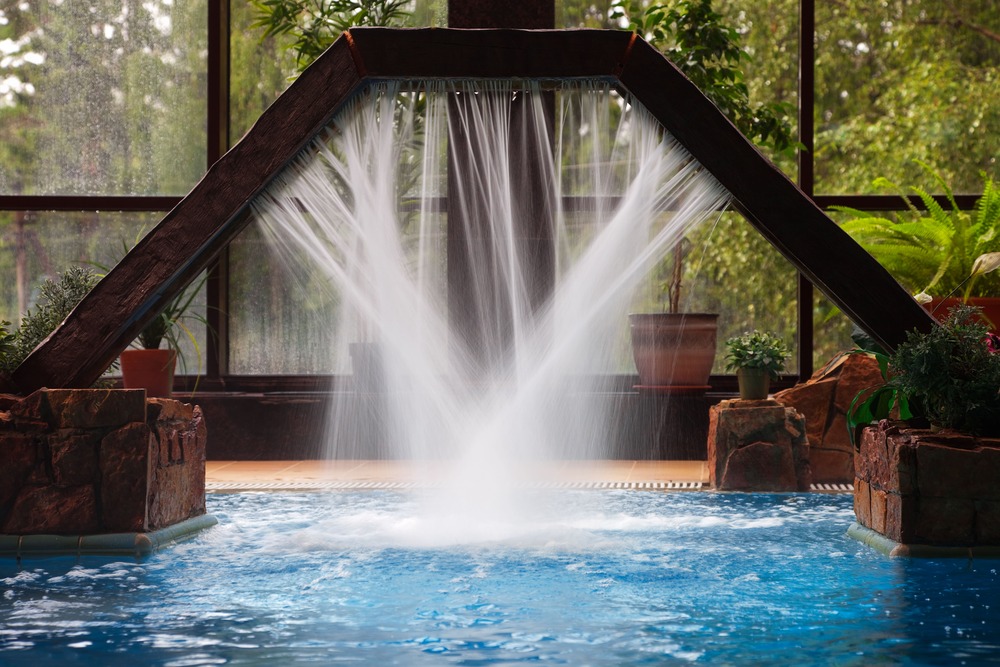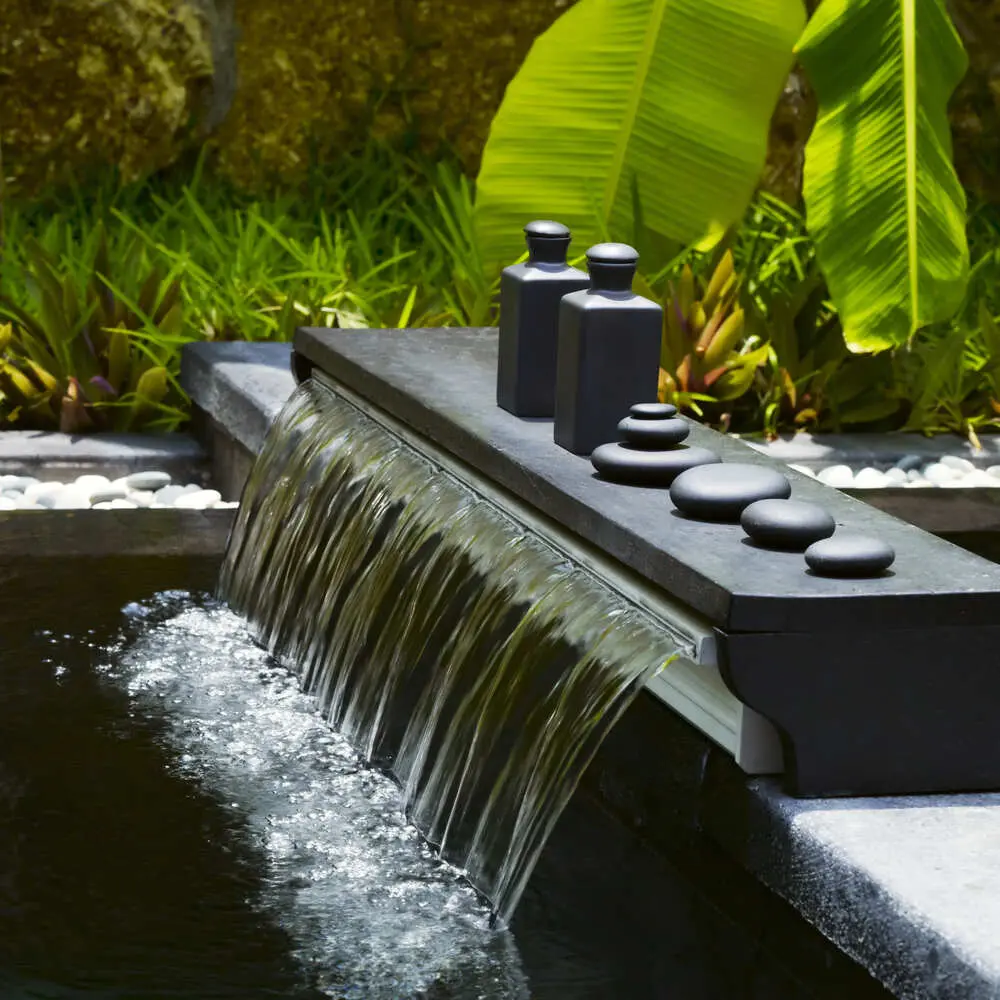The rise of the green spa and wellness trend is a key health and beauty movement, combining sustainability and self-care. These establishments are holistic sanctuaries devoted to nurturing overall well-being, with an increased focus on sustainability that reflects a shift in consumer priorities.
The spa industry is emerging as somewhat of a trailblazer. Green certifications, sustainable design methodologies, and environmentally conscious treatments have become fundamental rather than fleeting trends. At the core of this trend lies the design of wellness centers inspired by nature, incorporating biophilic elements and aligning with our natural circadian rhythms.
This holistic approach underscores the importance of integrating environmental considerations such as lighting, temperature regulation, and natural elements into wellness space design. By doing so, these spaces aim to foster an atmosphere that enhances physical and mental health. Here, we dive deeper into the green spa and wellness center concept and outline the design considerations.
Dive deeper with the eBook
Incorporating biophilic design in green spas
Green is widely recognized as a calming color due to its association with nature and growth. As the predominant color of foliage, green symbolizes renewal, tranquility, and harmony. Psychologically, green has a soothing effect on the mind, promoting relaxation and reducing stress levels. Its presence in green spa and wellness centers can evoke feelings of balance and stability, offering a sense of refuge from the hectic pace of modern life.
Whether it’s the sight of lush greenery or green elements in interior design, this color has a remarkable ability to create a serene and calming atmosphere. This is why biophilic design, which integrates natural elements, materials, and views into the built environment, is a crucial aspect of the design of a green spa and wellness center. This approach aims to reduce stress, enhance creativity, and improve well-being by fostering a connection with nature.
In a green spa and wellness center, biophilic design may involve indoor gardens, water features, natural building materials, and outdoor therapy areas. These elements can offer various experiences for visitors, ranging from Ayurvedic treatments and aromatherapy cabins to sensorial therapies in indoor spaces. Outdoor saunas, sensorial footpaths with natural elements, floatation therapies, and emotional showers are additional options to consider.

Combining light and color
Beyond their aesthetic appeal, these features provide tangible health benefits, contributing to the creation of a serene and healing environment for visitors. But it’s not only color that creates the relaxing atmosphere – it’s also light. Circadian rhythms, the innate biological processes regulating our sleep-wake cycle over 24 hours, are essential for overall health and well-being. However, modern lifestyles often disrupt these rhythms, leading to sleep disorders, stress, and related health issues.
A green spa and wellness center can be pivotal in addressing these challenges by integrating design elements and therapies that align with our natural circadian patterns. This includes utilizing natural lighting to emulate the sun’s cycle, maintaining indoor temperatures in sync with the body’s preferences throughout the day, and minimizing exposure to artificial light known to disrupt sleep patterns.

Designing sustainable well-being centers
A sustainable green spa and wellness center embodies a holistic approach to well-being, acknowledging that true health encompasses physical, mental, and environmental aspects. This philosophy must permeate every facet of the establishment, from its architecture and design to its operational practices and guest experiences.
The architecture and design of spas play a crucial role in their sustainability. Embracing sustainable design principles not only reduces the environmental footprint of spa facilities but also cultivates a tranquil atmosphere, enhancing the overall atmosphere. Utilizing natural light, energy-efficient heating and cooling systems, water-saving fixtures, and renewable energy sources are fundamental strategies. Notably, aquatic areas such as pools and hot tubs are features that demand careful consideration in terms of sustainability and efficiency. Implementing measures for water conservation and energy efficiency can significantly mitigate the facility’s carbon footprint.
Endorsements and certifications from reputable organizations validate a spa’s endeavors in conserving water and energy, minimizing waste, and prioritizing the use of eco-friendly products and materials. This not only elevates the spa’s standing in the industry but also resonates with the values of environmentally conscious consumers.

Complement green design with holistic treatments
Moreover, management should seek to align their design with their offering. A green spa and wellness center should offer eco-friendly treatments that utilize organic, natural, and chemical-free products, providing tangible health benefits such as Ayurvedic massages with natural oils.
Additionally, the concept of well aging underscores the importance of preventive measures for healthy aging, with green spas offering therapies and treatments aimed at enhancing long-term vitality. Through nutritional counseling, physical fitness programs, and age-targeted treatments, green spas prioritize wellness from a holistic perspective, supporting individuals in maintaining their health and vitality well into later life.
By embracing sustainability and natural care, these centers not only offer relaxation and rejuvenation but also empower clients to live healthier, more vibrant lives. This fosters a deeper connection between individuals and the environment they inhabit.
Embracing the green spa and wellness movement
The emergence of green spa and wellness centers marks a significant shift in the health and beauty landscape. These establishments prioritize environmentally conscious practices and incorporate biophilic design elements to foster connections with nature, promoting relaxation and reducing stress levels.
The design of green spas integrates natural lighting and calming colors, aligning with our circadian rhythms to support optimal health and well-being. Sustainable design principles ensure that every aspect of the spa, from architecture to operational practices, minimizes environmental impact while creating a tranquil atmosphere for visitors.
By opting for eco-friendly alternatives, green spas provide a refuge for individuals seeking rejuvenation and healing. Furthermore, they contribute to the broader mission of environmental preservation, aligning with the ethos of sustainable living. For spas that wish to remain relevant, incorporating at least some aspect of the green spa movement should be high on the agenda.
